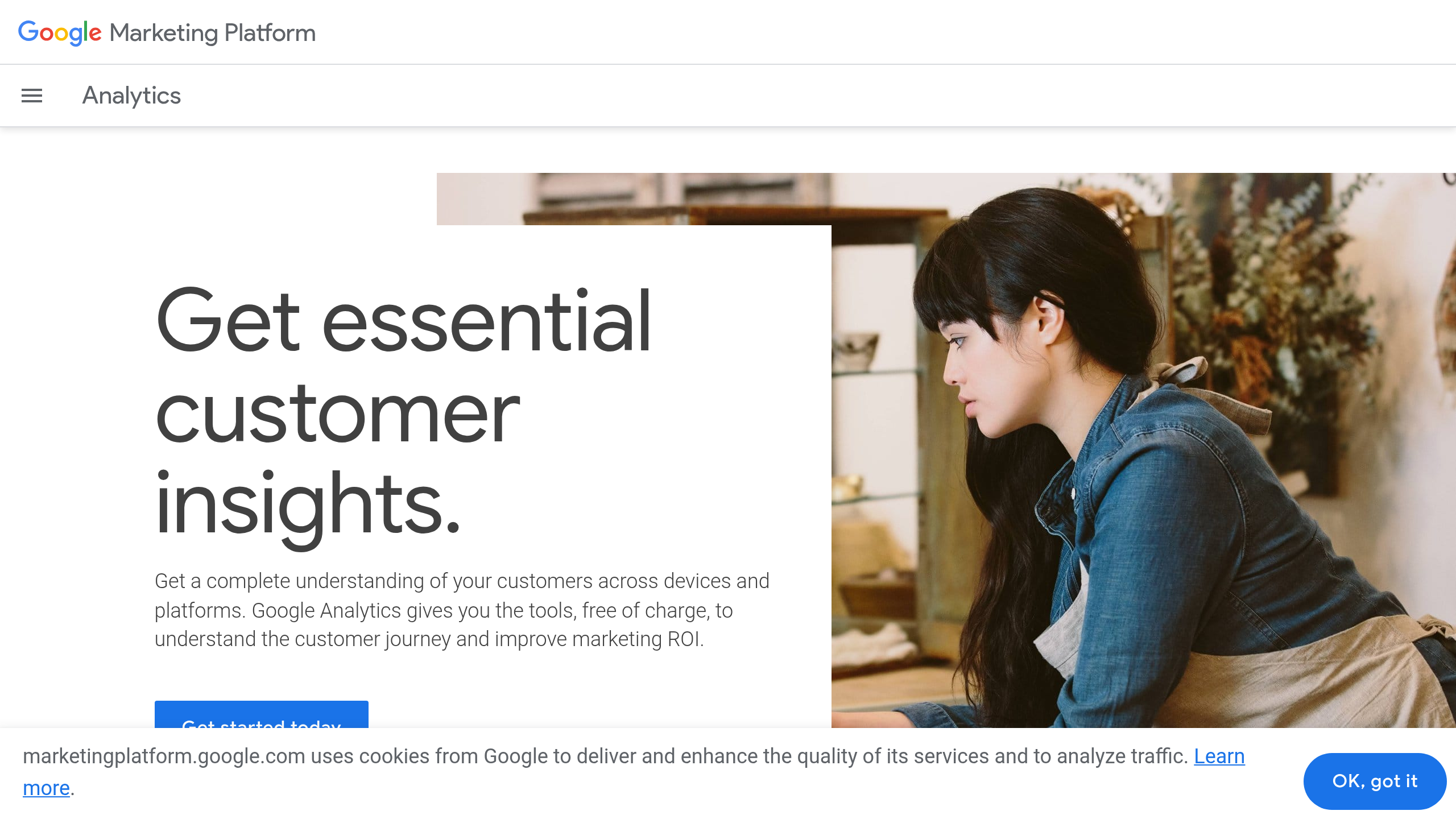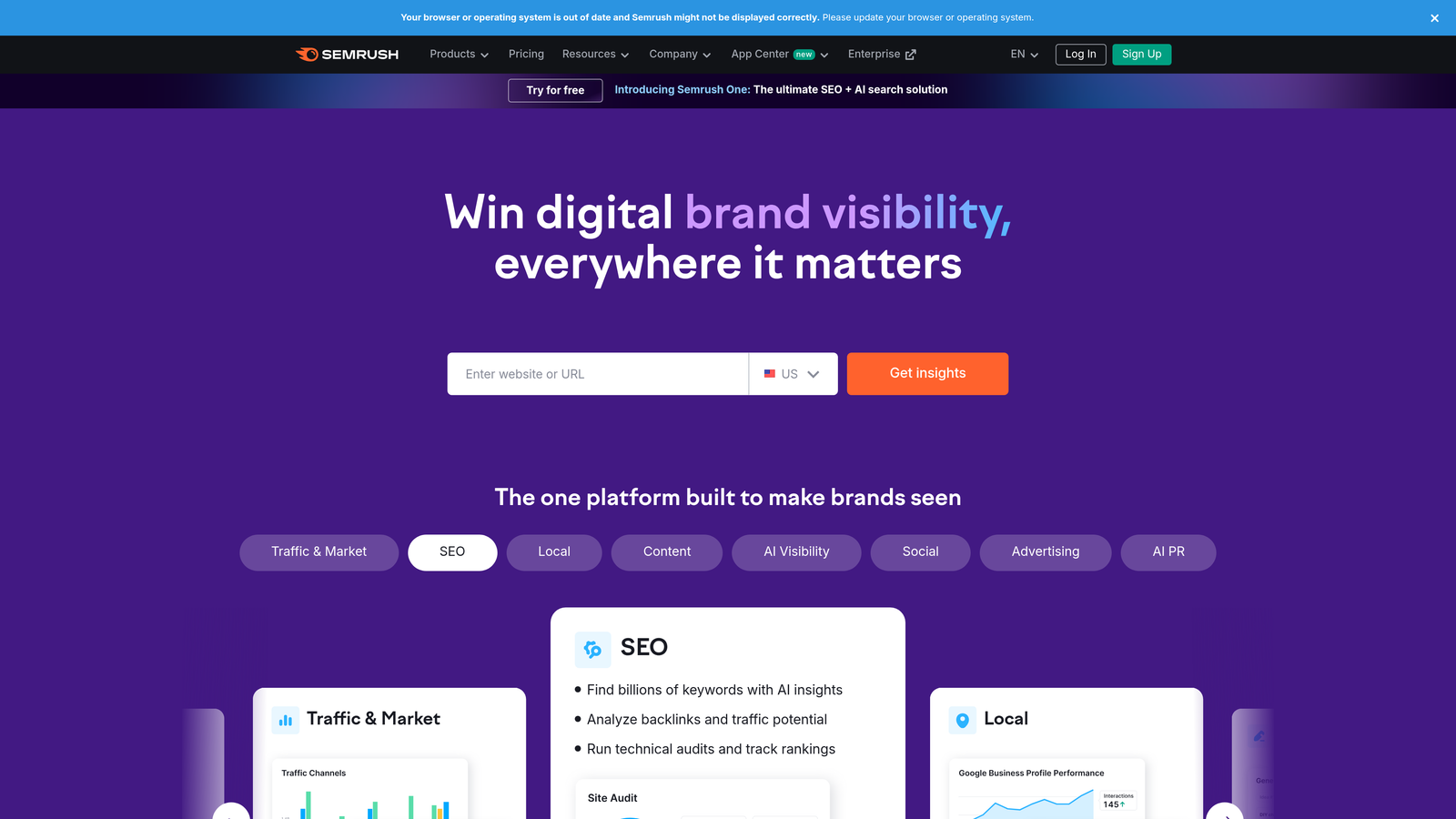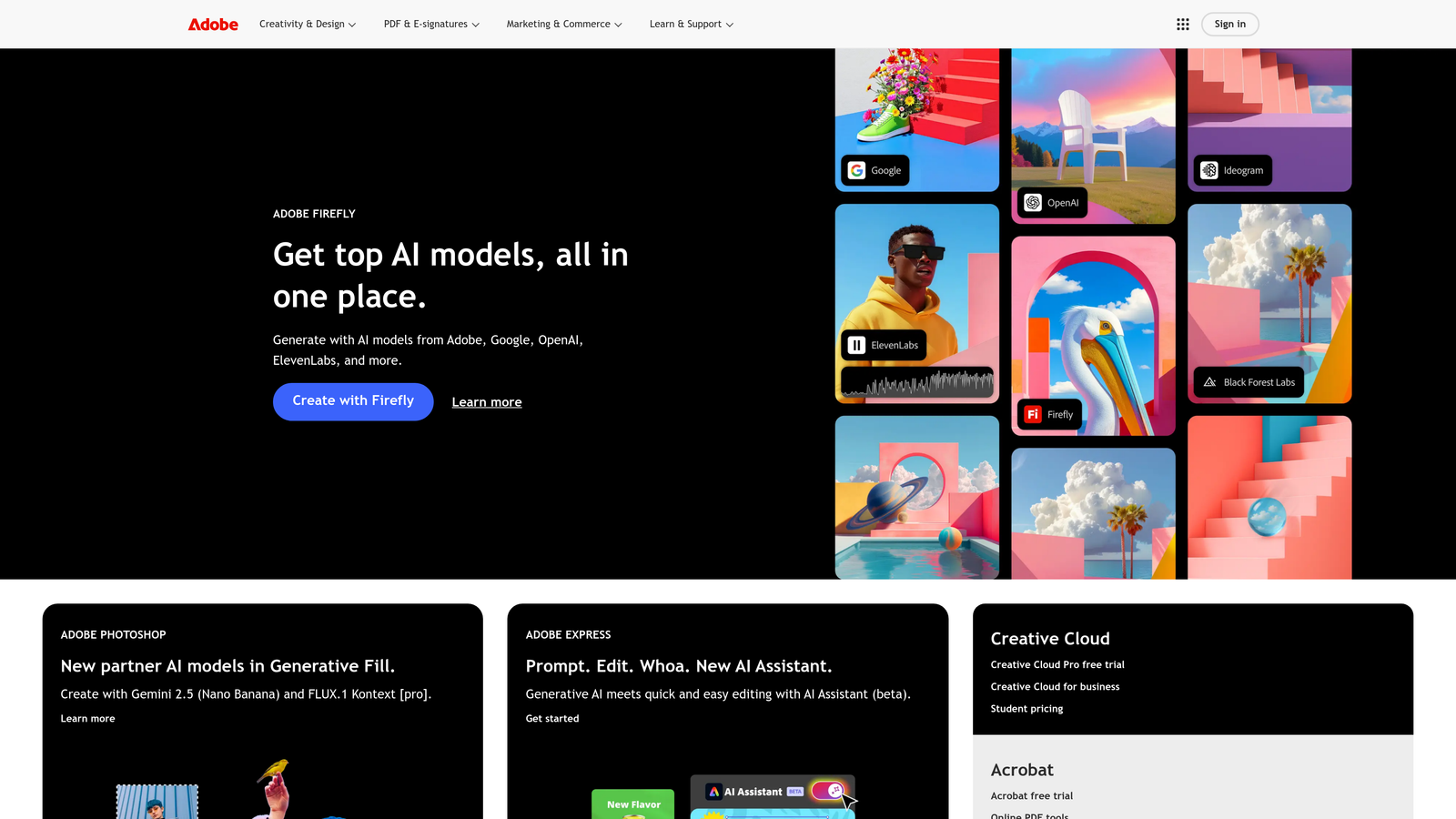Picture a marketing manager overwhelmed by countless data streams, unsure which metrics truly matter. Many businesses struggle to translate raw data into actionable insights, leading to missed opportunities and ineffective campaigns. As the digital landscape evolves, using the right revenue attribution software becomes crucial. These tools empower marketers to optimize campaigns, enhance ROI, and drive revenue by providing clarity and strategic insights from data. Below, we've put together a list of top tools to help you enhance your marketing analytics and achieve your goals.
Best for: Comprehensive Attribution and Analytics Tracking
Cometly is a marketing attribution and analytics platform that shows exactly which ads and channels drive leads and revenue.

Overview & Background: Cometly connects ad platforms and CRM to track the entire customer journey in real time. This integration allows marketers to capture every touchpoint, from ad clicks to CRM events, providing a complete view of customer interactions.
Key Features:
1. Multi-Touch Attribution: Cometly identifies the impact of each touchpoint along the customer journey, allowing businesses to see which marketing channels perform best.
2. AI-Driven Recommendations: The platform uses AI to analyze data and provide actionable insights on high-performing ads, helping marketers scale effective campaigns confidently.
3. Real-Time Data Tracking: Marketers can view data in real time, enabling quick adjustments to campaigns based on current performance metrics.
How It Works: By integrating with major ad platforms and CRM systems, Cometly collects and analyzes data from various sources. This enables users to see the full customer journey and understand how different touchpoints contribute to conversions.
Pricing & Plans: Cometly offers competitive pricing tiers that align with performance-driven marketing, making it accessible for both small businesses and large agencies.
Why It’s Great for Marketers: Cometly stands out for its comprehensive tracking capabilities and real-time insights, making it ideal for marketers who want clear, accurate data to drive their strategies.
Best for: Comprehensive Web Analytics
Google Analytics is the industry standard for tracking website performance.

Overview & Background: Google Analytics aggregates data from multiple sources to provide a holistic view of website activity, offering insights into user behavior and campaign performance.
Key Features:
1. Real-Time Data: Users can monitor website activity as it happens, which is crucial for time-sensitive campaigns.
2. User Segmentation: Google Analytics allows businesses to segment users based on various criteria, enabling targeted marketing efforts.
3. Customizable Reporting Tools: Users can create reports tailored to their specific needs, providing insights that align with their business goals.
How It Works: By embedding tracking codes into their websites, businesses can collect data on user interactions and behaviors. Google Analytics then processes this data to generate comprehensive reports.
Pricing & Plans: Google Analytics offers a free version with robust features, while the premium version, Google Analytics 360, provides advanced capabilities for larger enterprises.
Why It’s Great for Marketers: Its accessibility and powerful features make Google Analytics suitable for businesses of all sizes, from startups to large corporations.
Best for: Inbound Marketing and CRM Integration
HubSpot combines analytics with marketing automation to drive inbound strategies.

Overview & Background: HubSpot integrates marketing analytics with its CRM, enabling businesses to track lead performance and customer interactions across multiple platforms seamlessly.
Key Features:
1. Email Analytics: Users can track the performance of email campaigns, including open rates and click-through rates, to optimize future communications.
2. Social Media Tracking: HubSpot provides insights into social media engagement, allowing businesses to assess their social strategies effectively.
3. Comprehensive Reporting Features: Users can generate detailed reports that cover various aspects of their marketing efforts, providing a complete picture of performance.
How It Works: HubSpot collects data across its marketing platform and integrates it with CRM insights, ensuring marketers have a unified view of customer relationships.
Pricing & Plans: HubSpot offers a free tier with essential features and tiered pricing for businesses that require more advanced capabilities.
Why It’s Great for Marketers: HubSpot’s integration of analytics with marketing automation makes it particularly beneficial for teams focused on inbound strategies and lead nurturing.
Best for: Data Visualization and Advanced Analytics
Tableau transforms complex data into interactive and shareable dashboards.

Overview & Background: Tableau excels in handling large datasets and offers advanced visualization capabilities, making it a favorite among data analysts.
Key Features:
1. Data Blending: Users can combine data from multiple sources for comprehensive analysis and visualization.
2. Real-Time Analytics: Tableau provides real-time data updates, allowing businesses to make informed decisions quickly.
3. Predictive Analysis Tools: Built-in analytics tools help businesses forecast trends and prepare for future scenarios.
How It Works: Tableau connects to various data sources and allows users to create visualizations through an intuitive drag-and-drop interface, simplifying data analysis.
Pricing & Plans: Tableau offers different pricing tiers, including a free public version for individual users and paid versions for businesses requiring advanced analytics.
Why It’s Great for Marketers: Its powerful visualization options make Tableau ideal for organizations that need to present complex data clearly and effectively.
Best for: SEO and PPC Analytics
SEMrush focuses on competitor analysis and keyword tracking to enhance search strategies.

Overview & Background: SEMrush provides insights into competitors' strategies and performance metrics, making it invaluable for digital marketers.
Key Features:
1. Keyword Research: Users can find and analyze keywords to improve their search rankings and content strategies.
2. Backlink Analysis: SEMrush tracks backlink profiles to help businesses understand their link-building strategies.
3. Site Audits: The tool offers comprehensive site audits to identify technical SEO issues and areas for improvement.
How It Works: By inputting a website or keyword, users can access a wealth of data regarding search visibility and competitor performance.
Pricing & Plans: SEMrush offers subscription plans catering to various user needs, making it accessible for both small businesses and large enterprises.
Why It’s Great for Marketers: Its extensive feature set empowers marketers to optimize their SEO and PPC strategies effectively.
Best for: Enterprise-Level Analytics
Adobe Analytics offers robust tools for extensive data analysis suitable for large businesses.

Overview & Background: Adobe Analytics provides advanced segmentation and real-time data processing capabilities, making it a powerful tool for enterprise-level analytics.
Key Features:
1. Customer Journey Mapping: Users can visualize the customer journey, helping to identify key touchpoints and optimize experiences.
2. Predictive Analytics: Adobe Analytics uses machine learning to forecast trends and customer behaviors.
3. Extensive Integrations: The tool integrates with other Adobe products and third-party platforms for a comprehensive analysis.
How It Works: Adobe Analytics collects and analyzes data across various touchpoints, providing detailed insights into customer behavior and marketing performance.
Pricing & Plans: Pricing is tailored to enterprise needs, with personalized solutions based on specific requirements.
Why It’s Great for Marketers: It is ideal for large organizations with complex data analytics requirements, offering extensive capabilities for data-driven decision-making.
Best for: Product Analytics and User Engagement
Mixpanel focuses on tracking user interactions and behaviors to enhance product experiences.

Overview & Background: Mixpanel helps businesses improve user experience through detailed interaction tracking, allowing for data-driven product decisions.
Key Features:
1. Event Tracking: Users can track specific actions taken by users, providing insights into product usage and engagement.
2. Funnel Analysis: Mixpanel enables businesses to analyze conversion funnels, identifying drop-off points and areas for improvement.
3. Cohort Reports: The tool allows users to segment and analyze user behavior over time, facilitating targeted marketing efforts.
How It Works: By implementing tracking codes, businesses can collect data on user interactions and analyze it through Mixpanel’s intuitive interface.
Pricing & Plans: Mixpanel offers a flexible pricing structure based on usage and features, making it suitable for businesses of various sizes.
Why It’s Great for Marketers: Its focus on product analytics makes it particularly valuable for product managers and UX designers looking to optimize user interactions.
Having solid marketing analytics in place is essential for marketing teams aiming to make informed, data-driven decisions. In a landscape where consumer behavior is constantly evolving, relying on intuition alone can lead to missed opportunities and ineffective strategies. With robust analytics, teams can gain insights into customer preferences, track campaign performance, and identify trends that inform future initiatives.
Effective marketing analytics allows businesses to measure the impact of their campaigns accurately. By understanding which channels and strategies yield the best results, marketers can allocate resources more efficiently, optimizing their budgets and efforts. This data-driven approach not only enhances the effectiveness of campaigns but also fosters a culture of accountability within marketing teams.
Moreover, solid analytics tools enable real-time monitoring of marketing activities, allowing teams to respond swiftly to changes in consumer behavior or market conditions. This agility is crucial in today’s fast-paced digital environment, where timely adjustments can significantly affect campaign outcomes.
Additionally, well-implemented marketing analytics can enhance collaboration across departments. By providing a unified view of data, teams can work together more effectively, aligning their efforts toward common goals. This holistic approach ensures that all stakeholders are informed and can contribute to data-driven decision-making.
In summary, investing in solid marketing analytics is not just a tactical decision; it is a strategic imperative. By leveraging data, marketing teams can drive more effective campaigns, improve ROI, and ultimately contribute to the overall success of the business.
The tools mentioned above represent some of the best options available for enhancing marketing analytics. Each tool offers unique functionalities and strengths, making it essential for marketers to evaluate their specific needs and challenges before deciding. The right analytics tool can transform raw data into actionable insights, driving better campaign performance and overall business success.
As you explore these tools, consider how they can integrate into your current marketing strategies. Testing different platforms can reveal which one aligns best with your objectives and reporting needs. If you’re ready to take your marketing analytics to the next level, explore the tools further and consider how they can enhance your data-driven decision-making.
To get started, get your free demo of Cometly today and see how it can empower your marketing analytics efforts.
Learn how Cometly can help you pinpoint channels driving revenue.
.svg)
Network with the top performance marketers in the industry